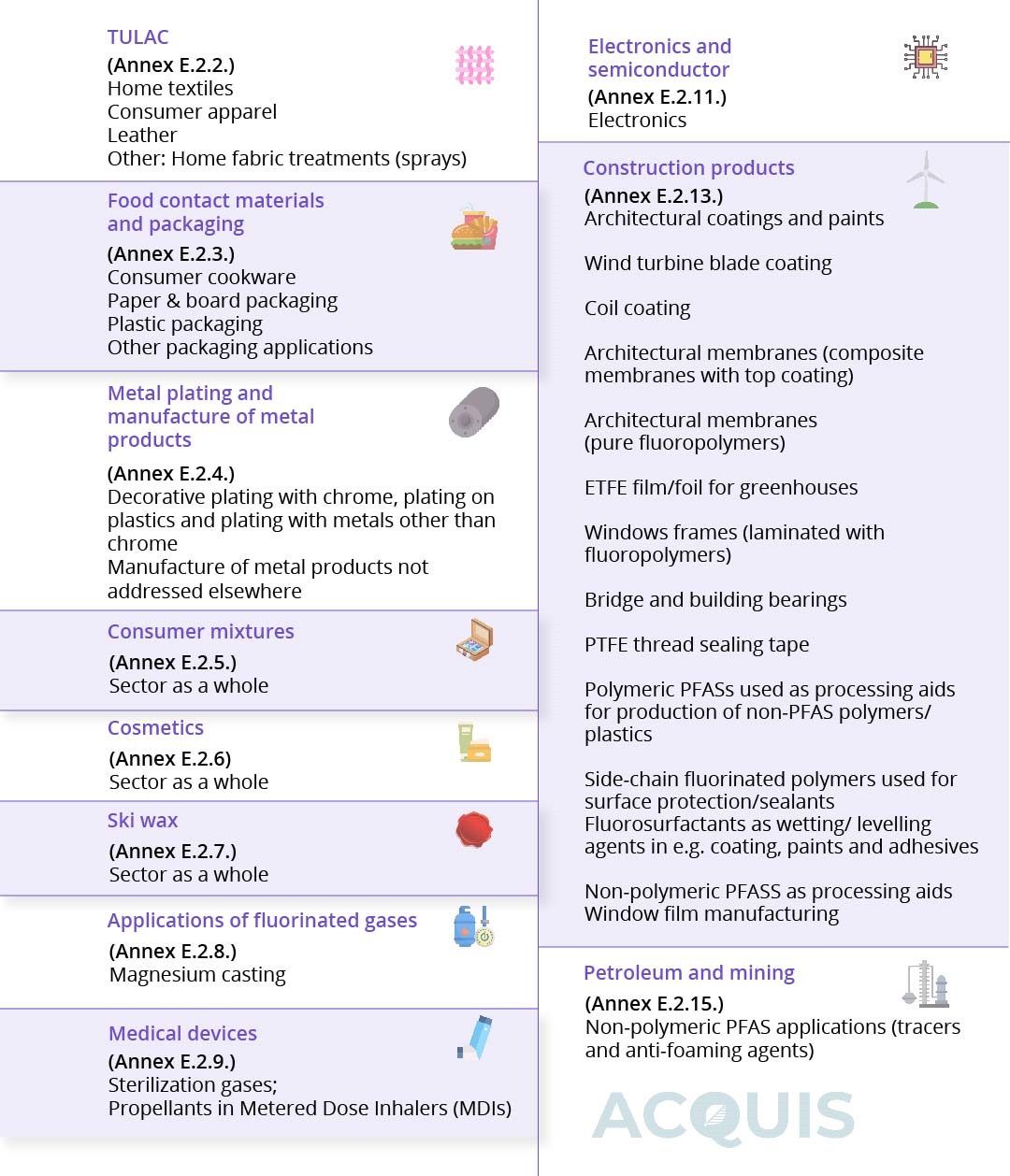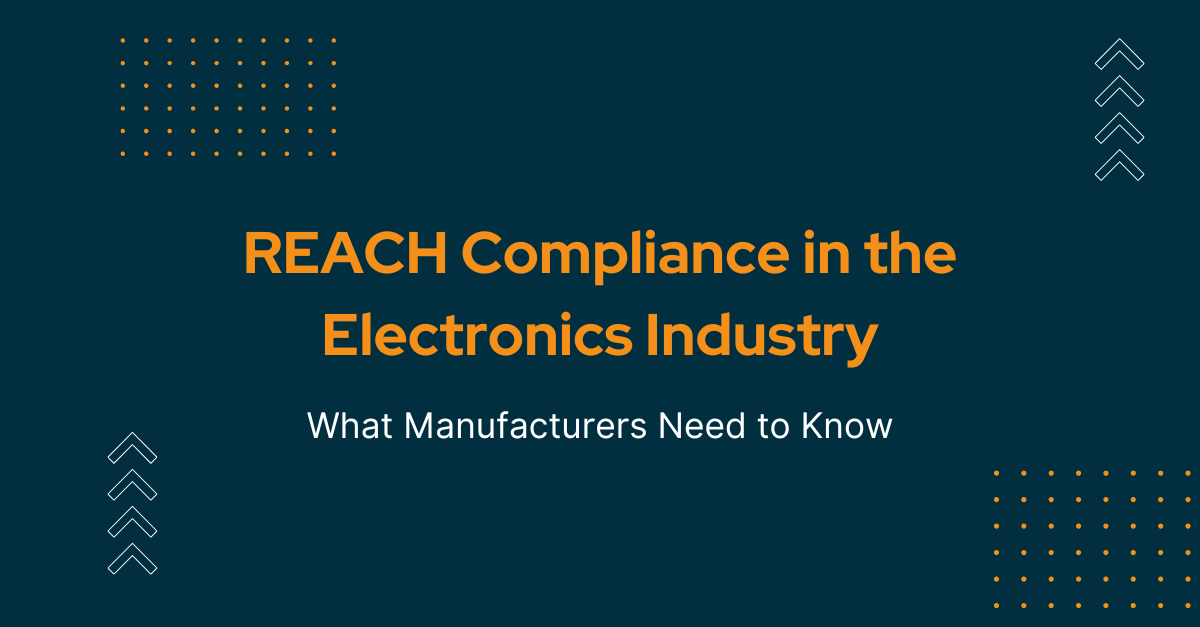Table of Contents
On January 2023, a proposal for a European ban on PFAS under REACH regulation was submitted to the European Chemicals Agency (ECHA) by a group of European countries including the Netherlands, Denmark, Germany, Norway, and Sweden. This landmark initiative aims to address the risks posed by PFAS, often referred to as "forever chemicals," due to their persistence, bioaccumulation, and potential toxicity.
With over 10,000 PFAS substances included in the proposal, the process represents one of the most significant regulatory efforts in the European Union.
The Journey to Restrict PFAS in the EU
- Stage 1: Submission of the Proposal
The process began with the submission of a comprehensive restriction dossier in January 2023. This document outlined the environmental persistence, bioaccumulation, and toxicity of PFAS, alongside the need for a unified approach to mitigate risks across the EU.
- Stage 2: Public Consultation and Evaluation
In March 2023, the European Chemicals Agency (ECHA) opened a six-month public consultation, inviting stakeholders to provide input on the proposal. Over 5,600 responses were received, revealing critical insights into PFAS applications, risks, and alternatives. These contributions:
Identified new PFAS applications, such as:
- Sealing applications (e.g., pipe linings, gaskets, and valve parts).
- Technical textiles (e.g., high-performance membranes and outdoor tarps).
- Printing applications (e.g., consumables and permanent parts).
- Medical packaging and excipients beyond traditional medical devices.
- Stage 3: RAC and SEAC Review
ECHA’s Risk Assessment Committee (RAC) and Socio-Economic Analysis Committee (SEAC) are conducting a detailed evaluation of the restriction dossier. Adopting a sector-based approach, the committees have already reached provisional conclusions for several industries, including:
- Consumer mixtures and miscellaneous consumer articles.
- Cosmetics.
- Ski wax.
- Metal plating and manufacturing.
- Petroleum and mining.
Upcoming evaluations in 2024 will focus on textiles, packaging, food contact materials, and more. These reviews will culminate in a final opinion to be submitted to the European Commission by 2025.
What's included in the EU's proposal for restricting PFAS under REACH?
To eradicate phenomenal production and usage of PFAS contamination of soil, water, and food sources, posing grave health risks to humans and ecosystems the (REACH) restriction proposal was jointly authored and submitted by five EU member states the Netherlands, Germany, Sweden, Norway, and Denmark. This proposal encompasses over 10,000 PFAS substances and presents two potential restriction options for the sectors mentioned below.
- Option 1 advocates for an outright ban following an 18-month transition period, Restriction
- Option 2 – the favored alternative – advocates for phased bans with time-limited derogations for specific applications, along with some exceptions for extraordinary cases.

Based on the proposed restrictions, authorities option 2 suggests allowing exceptions for certain uses of PFAS for either five or twelve years after implementing the restrictions. The choice between these durations depends on whether alternative products are available. If alternatives are still in development or not widely available, a five-year exception might be granted. However, if there are no feasible alternatives or if they can't be approved quickly enough, a twelve-year exception could be given. This approach aims to balance the need for safer alternatives with the practical challenges of transitioning away from PFAS.
Proposal for Immediate PFAS ban in EU under REACH regulation
In addition to the primary options, ECHA is considering alternative restriction measures to address socio-economic concerns:
- Conditional Production and Use: Allowing PFAS applications under strict emission controls.
- Lifecycle Management: Minimizing emissions during production, use, and disposal stages.
These measures are particularly relevant for critical sectors like batteries, fuel cells, and electrolysers, where immediate alternatives are not yet viable.

Journey of the PFAS Open Public Consultation in EU
Timeline of Key Milestones The process of adopting PFAS restrictions is organized into distinct phases:
March 2024:
RAC and SEAC focus on consumer mixtures, cosmetics, and ski wax.
June 2024:
Discussions on metal plating, manufacture of metal products, and additional PFAS hazards.
September 2024:
Evaluations for textiles, food contact materials, packaging, and petroleum sectors.
Early 2025:
Final opinions from RAC and SEAC guide the European Commission in drafting the restriction proposal.
2025:
Adoption of the restriction by the EU Parliament and Council, with immediate application across Member States.

How to Prepare for PFAS Restrictions under EU REACH Regulation
To prepare for the impending PFAS restriction, companies are advised to undertake a structured approach encompassing:
- Portfolio Assessment: Identifying PFAS usage across product portfolios and supply chains.
- Derogation Analysis: Conduct a comparative assessment to ascertain applicable derogations.
- Impact Evaluation: Quantifying the business ramifications and assessing the availability and impact of PFAS substitutions.
- Consultation Participation: Submitting impact assessment reports during the public consultation phase.
- Substitution Planning: Proactively evaluating and implementing substitution strategies aligned with regulatory timelines.
What the PFAS Restriction Proposes
The proposal outlines two options:
Option 1: Full PFAS ban after 18 months.
Option 2 (Preferred): Phased bans with derogations of 5 or 12 years, depending on alternative availability.
Industries Targeted for Immediate Restrictions
-
Consumer products and cosmetics
-
Metalworking fluids
-
Packaging and food contact materials
-
Ski wax
-
Petroleum and mining
Furthermore, in addition to the PFAS REACH Restriction proposal, companies must also assess the broader impacts of all PFAS substances on their operations. With the acceptance of this transition, companies can pave a path toward sustainability and resilience, setting a precedent for global chemical governance.
Talk to our compliance expert to discuss PFAS reporting under REACH regulation.



